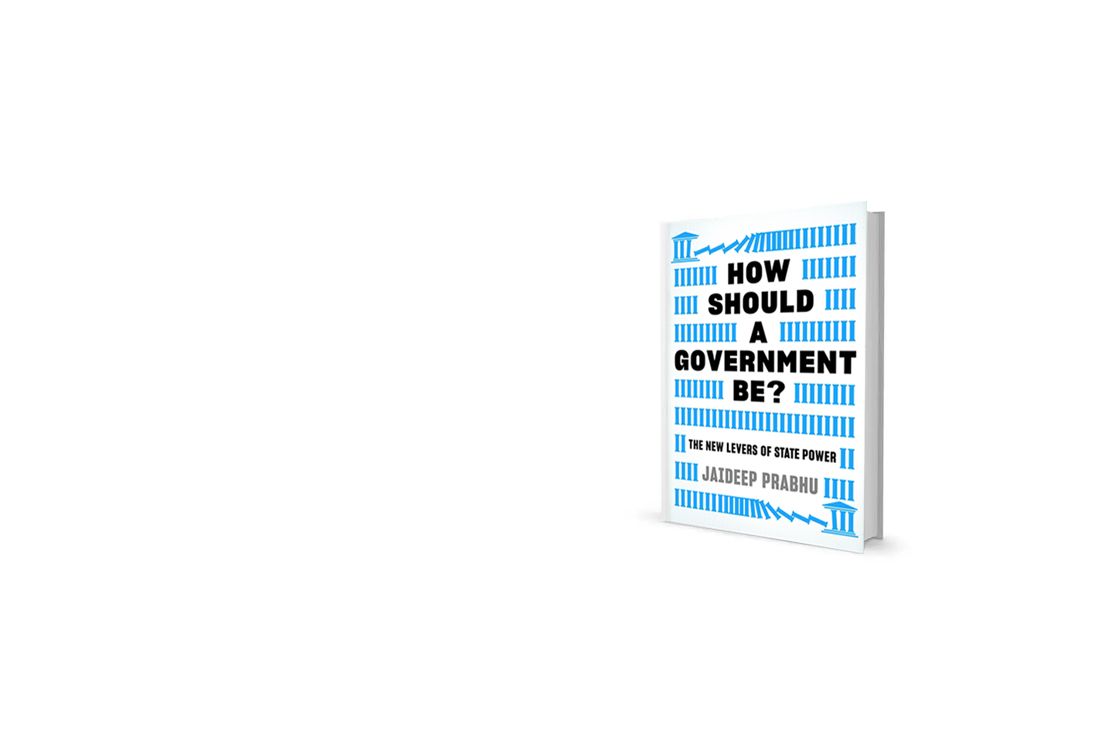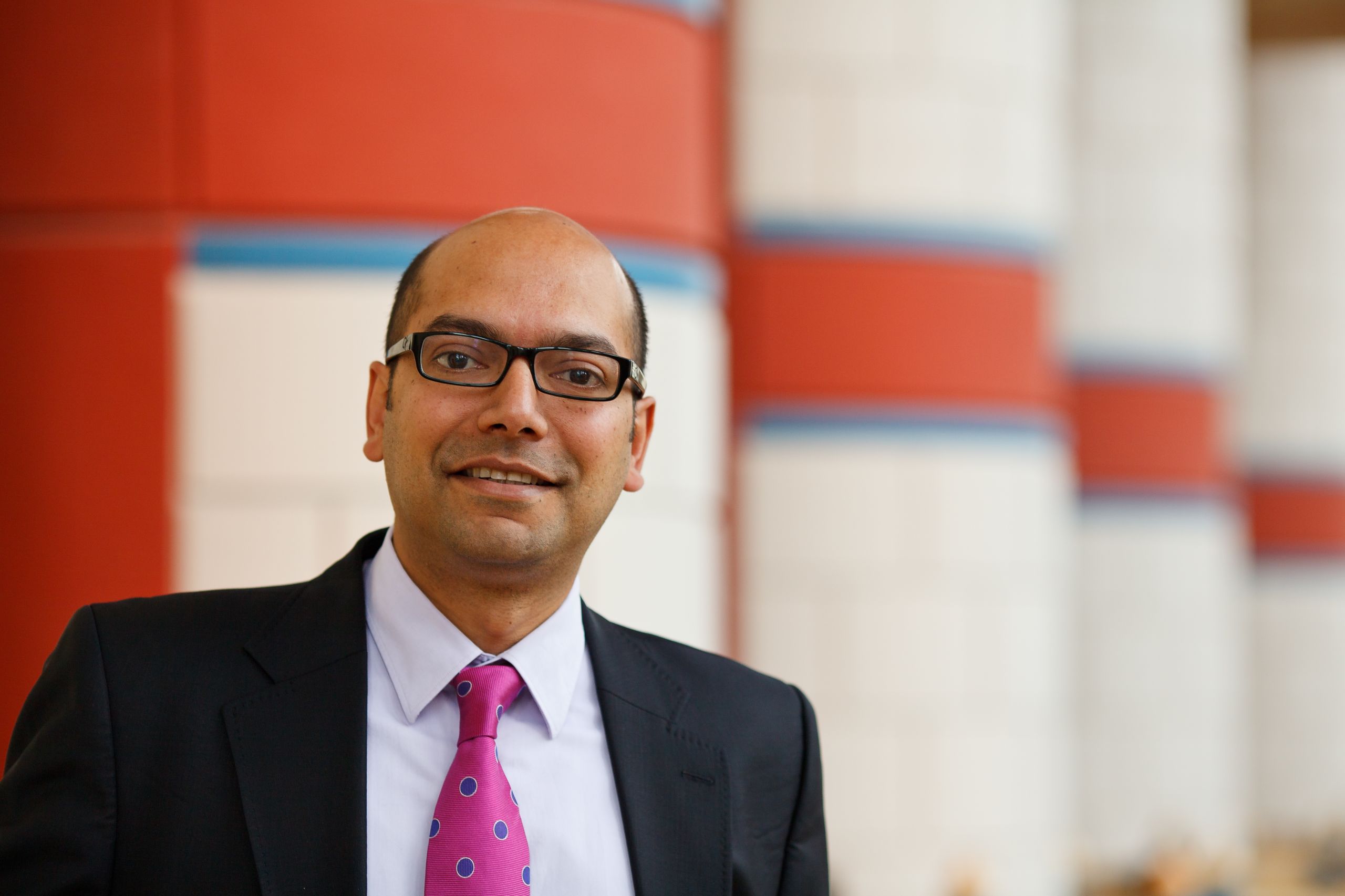How should a government be?

How should a government be?
Dr Jaideep Prabhu is a Fellow of Clare College, Jawaharlal Nehru Professor of Indian Business and Enterprise and Director of the Centre for India and Global Business at the Judge Business School. His most recent book, How Should a Government Be?: The New Levers of State Power, was published by Profile Books earlier this year.
A version of this article was originally produced for the Bennett Institute of Public Policy blog series.


I have spent the last two decades studying innovation in the private sector. In the first half of my career, I studied how such innovation was done in the affluent West by large corporations. Then I began to study innovation in emerging economies like India, where I had grown up. What I found there surprised me. In contrast to the Western ‘bigger is better’, highly structured model, firms in emerging markets are typically frugal and agile in how they go about innovation. They are good at doing more with less and at improvising and moving quickly with the market. Inspired by this discovery, I wrote a book about innovation in emerging markets called Jugaad Innovation, after the Hindi word ‘jugaad’ that is often used to describe such frugal and agile innovation.
Soon after Jugaad Innovation came out in 2012, I began to notice a great deal of interest in frugal innovation in the West for the West. More and more ‘ordinary’ people were increasingly empowered by a raft of new tools and resources to develop solutions to problems that only large corporations or governments could have taken on a decade or so before. This democratisation of innovation was giving rise to a frugal economy, underpinned by trends such as the sharing economy and the maker movement. What was exciting to see was how the internet – along with social media, smartphones, cheap computers and software, 3D printers, maker spaces and Fab Labs, accelerators and crowdfunding – was making it possible for small teams to engage in the entire innovation process from originating and developing solutions to manufacturing, promoting and distributing them to a global market. From this revolution came ‘frugal’ services such as Airbnb and WhatsApp as well as products such as the Square Reader, an internet-of-things device that can accept credit card payments through a smartphone’s audio jack. WhatsApp, for instance, was famously developed by four people in nine months or so and with about $250,000 in seed funds. Inspired by this revolution sweeping across Western cities and campus towns, I published a second book in 2015, Frugal Innovation, in which my co-author and I described what large and small organisations were doing in this space and the principles that underpinned their efforts.
Those two books were about the private sector. Yet whenever I gave talks about them, there was always the inevitable question from someone in the audience: “So, what does all this mean for governments?” More often than not, someone in the audience would also furnish me with answers by speaking about what was happening in governments around the world. Consequently, I became increasingly aware of a parallel revolution taking place in government.
The more I thought about the question of technology and government, the more I realised that it had at least three facets to it. First, there were the positive implications for how government itself functioned.
How could the state use new technology and ways of organising to deliver services to its citizens in improved ways, and do this more quickly and cheaply?
If Amazon, Google and Facebook could make the customer experience so seamless, could harness big data and analytics to do this skilfully, could coordinate huge numbers of actors on both the demand and supply side of the economy, bringing efficiency and prosperity in their wake, and keep on doing all this relentlessly, then surely governments could do the same? But I also realised there was a second, darker side to the issue. Perhaps governments could also use these very tools to gain greater control over their citizens, to monitor and surveil them, and accrue even more power. If Amazon, Google and Facebook had been able to gain so much influence over the lives of people, then how much more dangerous could those same tools be in the hands of governments? Finally, there was the question of how governments should view and manage the use of such tools by the private sector. What should governments do about the digital giants and their immense power? And how should states engage with start-ups and social entrepreneurs to stimulate innovation and drive inclusive growth? How, in brief, should a government function in the twenty-first century?
These are the questions I have set about addressing in my new book: How Should a Government Be?: The New Levers of State Power.
For over a century, the most explosive question in political thought has concerned the size of the state. Should it expand and take an active role in diverse areas of life? Or could that be meddlesome and wasteful? These questions might have made sense in the previous century. Now, I argue, with revolutions in technology and organisational structure, a revolution is also coming in the essential business of government. What I set out to show is that there is, in fact, a way in which governments can be both big and small, generous and frugal, deeply involved in the lives of their citizens while stopping short of meddlesome intrusion. This is true in times of stability, when the economy and society are ticking along nicely. But it is even more true in times of crisis, during financial downturns or pandemics, when the state has a crucial role to play but must do so efficiently and effectively. During the financial crisis of 2007–08, for instance, some governments did better than others at responding to the problems at hand in how they introduced and managed rescue packages and bailouts. The consequences of this response lived well beyond the immediate aftermath of the downturn. So, too, with the COVID-19 pandemic of 2020–21. Some governments have been noticeably more adept than others at harnessing their resources to respond quickly, humanely and effectively to the health and economic consequences of the crisis. The best of these have been able to balance the imperatives of securing public health with ensuring their economies do not grind to a halt. How have they done so?
Whether we like it or not, there are transformational technologies that are altering the potential scale and scope of both government and private enterprise.
Moreover, there are new forms of organising that go hand in hand with these technological changes. All this has consequences for old arguments about the scale and scope of the state. For example, for good or ill, we can now have a vastly intrusive state apparatus at low cost.
And so, I set out to examine the real landscape of alternatives that we face today: a world in which huge, unaccountable bureaucracies can be assembled in a bedroom and the machinery of surveillance is privatised, globalised and unaccountable; an outlook in which there are both worrying potential downsides as well as upsides to the new means available to governments; and, of course, a political environment in which we are aware that if our governments don’t use these means, others will. The question of how a government should operate has changed, and this book sets out to show how.
For instance, in an early chapter, I describe India’s Unique ID project to illustrate what governments can do today in terms of creating digital infrastructure and programmes on a huge scale and with limited budgets in effective, efficient ways. But the book also cautions us as to where the dangers of such approaches may lie. And so, in a subsequent chapter, I explore some of the pitfalls of the Unique ID project in terms of privacy and security, and look at the problems posed by similar initiatives around the world, such as China’s Social Credit Scheme. If governments can do more to serve their citizens, surely they can also misuse this powerful apparatus to conduct surveillance, to monitor, police and eventually oppress their people. What are the implications of this power for governments and societies?
Throughout the book, I consider stories and cases from both developed countries (such as the US, the UK, Denmark and Canada) and developing nations (such as India, China, Kenya and Bangladesh). This approach is fuelled by a conviction that cross-country comparisons matter. In important respects, governments are similar wherever they are: they have similar objectives, resources and constraints, and comparable processes by which they work. Yet even where they differ, comparisons can be revealing. After all, something that one country does differently can inspire people from another to change.

